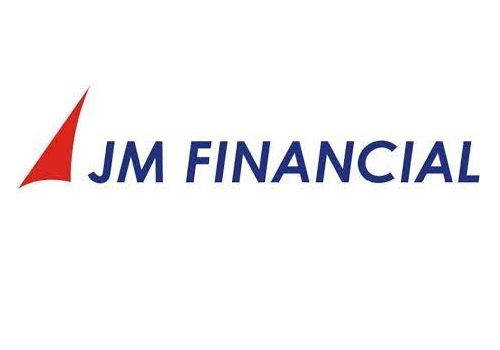Next big trigger pivoted on easing of peak supply delays - JM Financial

Follow us Now on Telegram ! Get daily 10 - 12 important updates on Business, Finance and Investment. Join our Telegram Channel
Following our earlier call of peaking commodity cycle after the mega bull run since the pandemic lows, our latest analysis highlights the criticality of supply lead times more than just the demand-supply equation. Our prognostication of a) slowing global growth, specially China and US, b) high inflation leading to early QE normalisation in the US and elsewhere, and c) unsusutainable commodity bubbles are panning out broadly in line with our global inflection thesis.
We re-examine our view on the portfolio, particularly UW metals (see here, here, and here) in the context of the recent bounce in metal stocks. Our conclusions are- (1) Slowing manufacturing seems evident in China, and now also in developed markets (DMs), (2) Acute supply delays in DMs and excerbating inflation can lead to uneasy QE tapering, (3) Steel prices are showing divergent trends; i.e. they are most buoyant in the US while moderating in China. (4) Annualized 1H 2021 world steel production growth exceeds projected consumption for 2021 & 2022, China’s 1H annualized production too exceeds estimated consumption.
Relative to global prices, removal of export tax rebate did not trigger perceptible rise in export prices, (5) Global steel companies have guided for an optimistic future which in our view is led by price realisation and pent up demand, (6) Trends across construction, automobiles and machinary across the world, which together contstitute 80% of steel consumption, indicate modest and truncated strength in demand revival.
They do not justify 2-4x rise in steel prices, (7) Abnormal US price escalation is due to elongated supply delivery. We anticipate things to improve by Oct-Nov’21 and even more by Mar’22, which should trigger metal price correction. Conversely, sustenance of supply rigidities can intensify stagflationary conditions and attract quicker QE tapering, which can expose cyclcial stocks to risk.
Thus, we maintain our broader portfolio structure of remaining- i) light on deep cyclicals including metals, and to some extent financials, and ii) higher weightage to consumption themes, pharma and IT. Correction in the auto space due to margin pressure and semiconductor shortage is not suprising, our contra OW call is geared for 6-12 month horizon. Easing of global supply chain constraints can be a significant trigger for export oriented and material intensive manufacturing. Also, our precautionary view on mid-small cap is maintained.
* Slower global growth can unwind the commodity spiral: The global manufacturing PMI at 55.4 for Jul’21 continued to moderate from the recent peak of 56.0 in May’21, indicating lower expansion. US manufacturing ISM fell to 59.5 in Jul’21 vs. the all-time high of 61.2 in May’21. China’s manufacturing is also exhibiting widespread slowdown (PMI at 50.4 vs. 52 in Mar’21), with small firms in the contraction zone. .
* Supply chain delays at peak levels, exacerbating inflation and slackening growth: Supply delivery times are at peak levels since 1998, especially in DMs. Similar spikes were seen in 2018, 2010, 2004, and 2000. These episodes saw spiralling commodity prices, high inflation and monetary tightening; and followed by slower growth, excess supply, and fall in commodity prices. Latest guidance from the US Fed and the BoE on QE tapering are thus on expected lines.
* Divergent steel markets-China in moderation, US most buoyant: In our view the dichotomous trends of weakening signs in China point towards initial signs of metals price correction, in which the trajectory of supply delivery times in the western world will be most critical, specially in the US and Europe.
* China’s producing steel in excess of projected consumption: Growth slowdown in China, along with i) rising inventory (40-60% higher than pre-COVID-19 average) and ii) annualized 1H 2021 production surpassing even the projected 2022 consumption, suggest that China’s exports and production restraints may be geared to manage supplies and prices. This will be pertinent for steel producing countries in Asia where China sells 52% of total exports. China is expected to announce a new fiscal package to tackle the widespread slowdown.
* World’s steel production at peak levels: Global steel production of 1004mn tons in 1H, 14% YoY is higher-than-projected consumption growth for 2021 and 2022. Most large steel producing countries are in excess of their domestic consumption; hence, global production will need to decline 2.5% YoY in 2H. Total available for exports from the annualized 1H2021 production could rise to 490 mn tons or 21% YoY, which will be an all-time high. Clearly, aggregate data suggests that the pace of production thus far can create global surplus, especially if demand slows in 2H2021 and after.
* Exuberant quarterly commentaries: Results of steel companies including US and European highlight positive demand outlook following a strong Jun’21 quarter. Particularly in the US, where the steel price trend is the strongest, companies have seen record EBITDA growth driven by strong price realization and rebound in demand across most end user segments. We think a large part of buoyancy is coming from pent-up demand, truncated sectoral strength and most importantly spiraling steel prices, accentuated by supply chain rigidities.
* US: Rebound in construction & machinery not unusual; no construction boom elsewhere: Aggregate data on key drivers for steel demand, i.e. Construction (45%), Automotive (26%) and Machinery (9%), which contribute 80% of steel consumption do not reflect a wide spread consumption revival. (a) Rebound in US construction is led by residential, while steel-intensive non-residential construction is contracting. Construction industry is losing steam in China, Europe, and India after a modest recovery. (b) US automobile production (also in Europe and China) has extended the declining path since 2014; semiconductor shortage has accentuated it. (c) Lastly, the rebound in spending on capital goods, including machinery is the strongest support for steel demand. However, here again it is not an unusual rebound compared to earlier cycles.
* Abnormal US price escalation due to elongated supply delivery: The 4x rise in steel prices appears to be driven by long lead times for steel delivery. ISM Service delivery index, at 72.5 in Jul’21 remains elevated, despite the moderation from 75.1 MoM. Labor shortage reflected in shortage of truck drivers and the 160% rise in truck freight rate has impacted lead times for several commodities, including steel.
Supply lead time for HRC has doubled even after declining from 10 weeks in Jan’21 to ~8 weeks. In our constructive scenario, we expect lead times for metals to improve as drivers resume work after the check doleouts end in Sep’21 leading to higher truck tonnage availability, which is expected to reach pre-COVID level by Oct-Nov’21 and further to the pre-COVID peak by Mar’22. There exists an inverse correlation between cyclical variations in truck tonnage and metals prices indices (Iron & Steel). Truck tonnage is currently above the trend (0.1%). Further rise to 2% above the trend can lead to metal price correction, in our view.
To Read Complete Report & Disclaimer Click Here
Above views are of the author and not of the website kindly read disclaimer












 320-x-100_uti_gold.jpg" alt="Advertisement">
320-x-100_uti_gold.jpg" alt="Advertisement">












